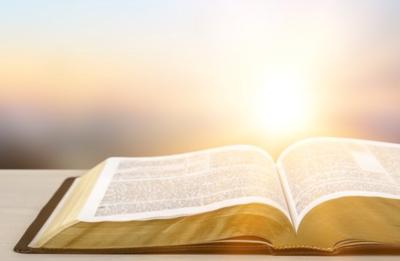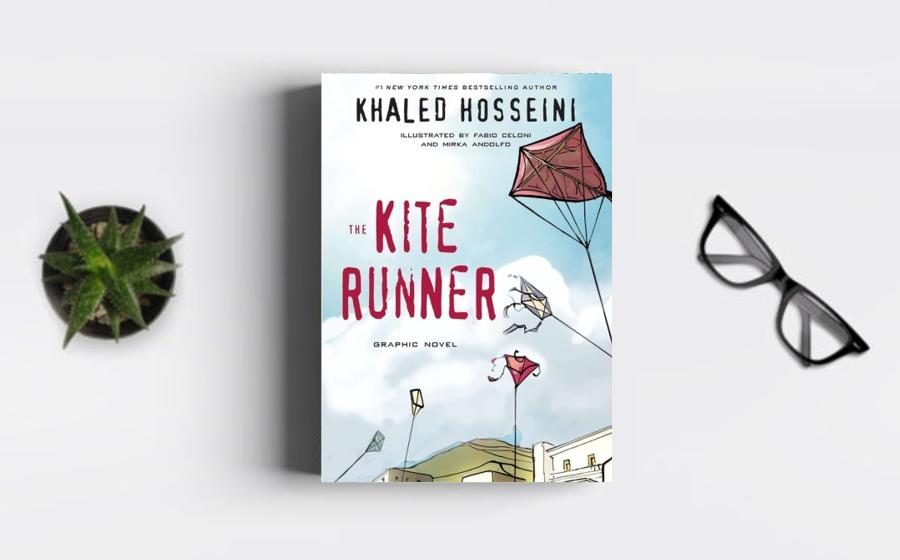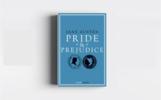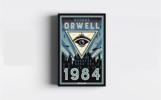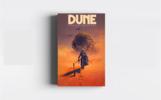"The Kite Runner" by Khaled Hosseini stands as a
literary tour de force that transcends cultural
boundaries to become a universal exploration of
redemption, betrayal, and the resilience of the human
spirit. Navigating the
poignant narrative of Amir and Hassan in the
kaleidoscopic backdrop of Afghanistan is to witness the
intricacies of friendship, guilt, and the profound
impact of historical upheavals. Hosseini's prose, rich
in emotion and cultural resonance, propels "The Kite
Runner" into the echelons of the Top 10 Books of all
time. It is not merely a novel; it is a tapestry of
human experience that resonates with readers on a deeply
emotional and empathetic level.
Khaled Hosseini's
narrative mastery in "The Kite Runner" lies not only in
the evocative storytelling but in the vivid portrayal of
Afghanistan's cultural tapestry. I am captivated by Hosseini's ability to use
prose as a window into the sights, sounds, and emotions
of a country undergoing profound transformation. The
novel's opening line, "I became what I am today at the
age of twelve, on a frigid overcast day in the winter of
1975," sets the tone for a narrative that unfolds
against the backdrop of both personal and national
evolution.
Hosseini's descriptions of the
bustling bazaars of Kabul, the serene beauty of the
Panjshir Valley, and the haunting memories of pre-Soviet
Afghanistan become integral to the novel's immersive
power. The author's careful attention to cultural
nuances and the changing landscapes of the country
enriches the narrative, transforming it into a literary
journey that transcends time and place.
At the
heart of "The Kite Runner" are the characters of Amir
and Hassan - a Pashtun and a Hazara, respectively - whose
destinies become intertwined in a complex web of
friendship, betrayal, and redemption. I am struck by Hosseini's nuanced portrayal
of the dynamics between the two boys, highlighting the
impact of social hierarchies and the consequences of
moral choices.
Amir, the privileged son of a
wealthy Pashtun, grapples with the burden of guilt after
betraying Hassan, his loyal Hazara friend. The novel
unfolds as a journey of self-discovery and redemption
for Amir, whose choices reverberate through the decades.
Hassan, a symbol of unwavering loyalty and innocence,
becomes a tragic figure caught in the crossfire of
personal and societal conflicts.
Hosseini
navigates the complexities of their relationship with
sensitivity, inviting readers to reflect on the power
dynamics inherent in friendships, the consequences of
betrayal, and the enduring bonds that transcend social
and cultural divides.
Baba, Amir's father, is a
towering figure in "The Kite Runner," embodying the
complexities of fatherhood, societal expectations, and
the pursuit of redemption. I am moved by Hosseini's portrayal of Baba as a
multifaceted character whose flaws and virtues shape the
narrative. Baba's expectations for Amir, his own
struggles with guilt and redemption, and his stoic
resilience in the face of personal challenges contribute
to the novel's emotional depth.
The father-son
dynamic becomes a thematic undercurrent, exploring the
interplay between expectations and reality, pride and
sacrifice. Baba's role as both a source of influence and
a symbol of Amir's internal conflicts adds layers of
complexity to the novel, inviting readers to examine the
intricate relationships between fathers and sons and the
enduring impact of parental expectations.
Assef,
the novel's antagonist, serves as the personification of
evil in "The Kite Runner." I am struck by Hosseini's portrayal of Assef as
a sociopathic figure whose actions echo the broader
societal ills that afflict Afghanistan. Assef's cruelty,
fueled by bigotry and a twisted sense of righteousness,
becomes a catalyst for the novel's exploration of the
consequences of unchecked power and moral indifference.
Hosseini uses Assef's character to confront readers
with the harsh realities of Afghanistan's tumultuous
history, including the rise of the Taliban. The
character becomes a symbol of the atrocities committed
during times of political upheaval, forcing readers to
confront the depths of human depravity and the enduring
quest for justice in the face of injustice.
"The
Kite Runner" is not only a personal narrative but also a
reflection of Afghanistan's socio-political turmoil. I appreciate how
Hosseini integrates the nation's tumultuous history into
the characters' personal journeys. The Soviet invasion,
the rise of the Taliban, and the diaspora of Afghan
refugees become integral elements that shape the
characters' destinies and add layers of complexity to
the narrative.
Hosseini's exploration of the
impact of political upheavals on individual lives is
both poignant and illuminating. The novel becomes a
mirror that reflects the resilience of the Afghan people
amid adversity, inviting readers to empathize with the
human cost of conflict and displacement. The
socio-political backdrop serves as a narrative force,
contributing to the novel's thematic richness and
providing a broader context for the characters'
struggles.
Kite running, a recurring motif in the
novel, serves as a powerful symbol of redemption and
healing. I am impressed
by Hosseini's use of this cultural
tradition to convey deeper layers of meaning. The act of
kite running becomes a metaphor for the characters'
pursuit of personal redemption, the mending of broken
relationships, and the restoration of honor.
The
kite-fighting tournaments, with their intricate
strategies and the symbolic cutting of opponents' kites,
mirror the characters' internal battles and the societal
conflicts that shape their lives. The symbolism of kite
running adds a layer of cultural authenticity to the
narrative, grounding the characters' struggles in the
rich tapestry of Afghan traditions. The kites, with
their soaring flights and inevitable falls, become
emblems of hope and the possibility of healing in the
face of profound trauma.
The introduction of
Soraya and Sohrab in the latter part of the novel marks
a turning point in Amir's journey toward redemption. I find the characters of
Soraya, Amir's wife, and Sohrab, Hassan's son, to be
poignant additions that contribute to the novel's
exploration of familial bonds and the healing power of
love.
Soraya's struggles with societal
expectations and her unconditional support for Amir add
a layer of complexity to the novel's exploration of
marriage and the evolving roles of women in Afghan
society. Sohrab, a silent and traumatized child, becomes
a symbol of the generational impact of trauma and the
possibility of healing through familial connections.
Hosseini's inclusion of these characters expands the
narrative beyond personal redemption to explore the
broader themes of family, sacrifice, and the enduring
capacity of the human spirit to overcome adversity.
"The Kite Runner" is a literary masterpiece that
invites readers to confront the shadows of the past,
embrace the possibilities of forgiveness, and
recognize the enduring bonds that connect us all.
Khaled Hosseini's narrative, marked by its emotional
depth and cultural authenticity, ensures that "The
Kite Runner" remains a beacon in the literary
landscape - a novel that continues to touch hearts and
inspire contemplation on the profound themes that
define our shared humanity.
